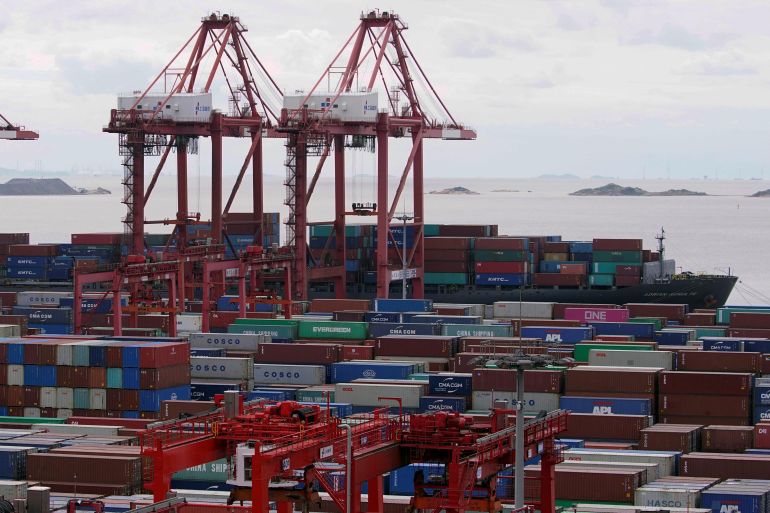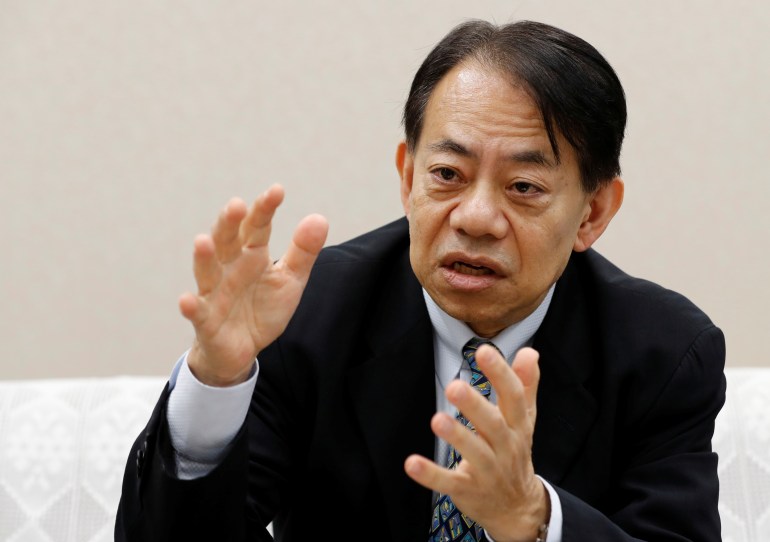Asia Pacific trade booms despite COVID curbs: ADB
Asian Development Bank President Masatsugu Asakawa says harsh pandemic restrictions are now ‘more difficult to justify’.

Trade in the Asia Pacific region grew faster than the global average last year despite COVID-19 restrictions and supply chain disruptions, according to the Asian Development Bank (ADB).
Asia Pacific trade grew almost 30 percent in the first 3 quarters of 2021, compared with global growth of about 28 percent, according to the Asian Economic Integration Report 2022 released on Wednesday.
Keep reading
list of 4 itemsHong Kong adviser ‘very optimistic’ city will reopen within year
Pfizer’s COVID sales to top $50bn this year, investors want more
WHO calls on rich countries to do their ‘fair share’ to end COVID
Trade among economies in the region alone rebounded just over 31 percent over the period, after a 3.1 percent contraction in 2020, the Manila-based development bank said.
In a sign of increasing regional integration during the pandemic, the share of intra-regional trade hit 58.5 percent in 2020, the highest since 1990, largely as a result of China.
North America and Europe plus the United Kingdom had comparable figures of 39.3 percent and 63.8 percent, respectively.
ADB Chief Economist Albert Park said the figures provided encouraging signs of a “resilient recovery” from COVID-19.
“The pandemic has caused visible economic damage and reversed many of the region’s hard-won gains in reducing poverty,” Park said. “We must build on the achievements of regional integration and cooperation to support a return to inclusive and sustainable economic growth.”
While North America and Europe are pushing ahead with reopening their economies amid the spread of the Omicron coronavirus variant, the Asia Pacific is taking a cautious tack, with life in much of the region not much less restricted than at the start of the pandemic.
Major economies, including China, Hong Kong, Japan and South Korea, are continuing to impose tough restrictions on businesses, while travel in the region remains at a standstill.
Air travel in the Asia Pacific last year was down 93.2 percent compared with pre-pandemic levels, according to the International Air Transport Association, by far the steepest decline of any region.

Speaking to Al Jazeera ahead of the report’s release, ADB President Masatsugu Asakawa said harsh pandemic restrictions were “more difficult to justify” amid high vaccine rates and evidence of Omicron’s milder symptoms.
“Before vaccines were available, mobility restrictions helped keep the pandemic in check, to avoid straining health systems,” Asakawa said. “But with good progress on vaccinations now, and with the Omicron variant being less severe, it looks like large-scale lockdowns are harder to justify given their large economic cost.
“Another form of government intervention, which is continued policy support to the economy and subsidies to vulnerable people, is still very much needed.”
Asakawa said governments must be on guard to sustain the region’s economic recovery.
“On the macroeconomic side, we need to ensure that recovery is not delayed either by the pandemic or by other factors,” he said. “We must keep the pandemic in check not through very strict lockdowns, but by furthering progress on vaccination, as well as testing and treatment. At the same time, we must guard against volatility that could result from external factors such as the tightening of policy measures in advanced economies.”
In December, the ADB slightly downgraded its regional growth forecast for 2021 from 7.1 percent to 7 percent, citing the rapid spread of Omicron. The development bank revised its estimate for 2022 to 5.3 percent, down from 5.4 percent.